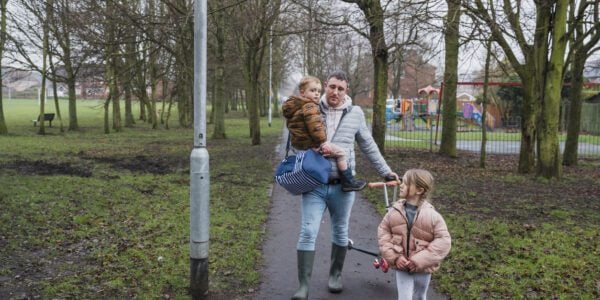
28/09/16
3 min read
New research from LSE and funded by the Nuffield Foundation suggests that government proposals to introduce a new national early years funding formula could put the sustainability and quality of early years education and care providers at risk.
The government is proposing a new national funding formula for early years education and care in 2017-18, at the same time as introducing free entitlement to 30 hours of childcare for working parents of three- and four-year-olds.
The reforms will change funding levels received by early years education providers — for example, private or voluntary nurseries and pre-schools, nursery classes in primary schools and also independent schools and childminders.
In their reports, Dr Philip Noden and Professor Anne West from the Department of Social Policy at LSE provide a picture of how existing local funding formulae have been constructed, how funds have been distributed to different types of providers, and how they have addressed different policy priorities.
Rates will vary across local authorities
The study concludes that some early years education providers will see increases in rates paid, while others will face cuts. In addition, in some areas providers employing more highly qualified staff will lose funding, while other providers without qualified staff would gain.
The research project found that:
- In two-thirds of areas, local authorities paid different hourly ‘base rates’ to different types of providers.
- In around half of areas additional supplementary payments were made to higher quality early education providers.
- Providers could be paid at a large number of different rates. In one authority, owing to the use of various incentives to improve provision, this meant the local funding formula could pay different providers at 56 different rates.
Government ‘minded’ to remove supplementary payments for high quality early years provision
The consultation document proposes that a single ‘base rate’ is paid to all providers and states the government is ‘minded’ to remove supplementary payments relating to quality. These changes will mean that some providers which employ highly qualified staff will see a cut in the rates they receive. Other providers which do not employ highly qualified staff will see an increase in the rate paid.
The consultation gives the new rates local authorities will receive from central government. ‘Illustrative average hourly rates that a provider might expect to receive for 3-4 year old funding in 2017-18’ are also provided.
The researchers report that, for either school nursery classes or for private, voluntary or independent (PVI) providers, in 41 local authority areas the average rate a provider might expect to receive in 2017-18 is lower than the average rate which was paid in 2015-16¹. In the other 109 local authority areas the illustrative rate is higher than the average rate which was received by both nursery classes and by PVI providers in 2015-16.
However, the data provided by government does not provide information on the funding rates received by individual providers. Nor does it provide insight into the vulnerability of providers of different types and in different areas to the introduction to the 30 hour entitlement².
Changes will have unpredictable effects
Dr Philip Noden said: “Central government would like providers of different types – nursery classes and private, voluntary and independent providers – to be paid at the same rate. They also want to introduce a transparent formula for determining how much money goes from central government to local government. And they have committed to increase the rates they pay to providers. They also want to increase the entitlement from 15 hours to 30 hours for working parents. The problem is that they want to do all of these things at the same time.”
“The proposals for changes to the funding arrangements for the free early education entitlement are intended to support the delivery of the 30 hour entitlement for working parents of three- and four-year-olds. That entitlement will see a welcome and substantial reduction in the childcare costs of the families concerned. However, it is also important that reforms are implemented without placing at risk either the sustainability of early education providers or the quality of provision available.
“The proposed changes will have very unpredictable effects, local authorities will doubtless try to reduce the worst of these effects. But they will have less power to ‘smooth over’ those effects due to new restrictions such as the requirement that 90 per cent of funding flows through a single base rate payable to all providers.”
Professor Anne West said: “There are various reasons why the funding of early years education differs across England, but many of these are historically based and a result of decisions made by central and local government in the past. The development of publicly-funded early years education and care over the past 100 years has been patchy with little overall planning. Choices made at the local authority level to prioritise – or not – nursery education are crucially important to understanding the current context.”
Related project
¹In 23 areas the rate paid for nursery classes would be lower, in 5 areas the rate for PVI providers would be lower and in 13 areas the average rate for both types of provider would be lower.
²The 30 hour entitlement will mean some parents who currently pay for childcare will have that care paid for by the local authority. Providers which charge less to parents than they receive from the local authority will increase their income. However providers which charge parents more than the local authority pays will lose income.




















































